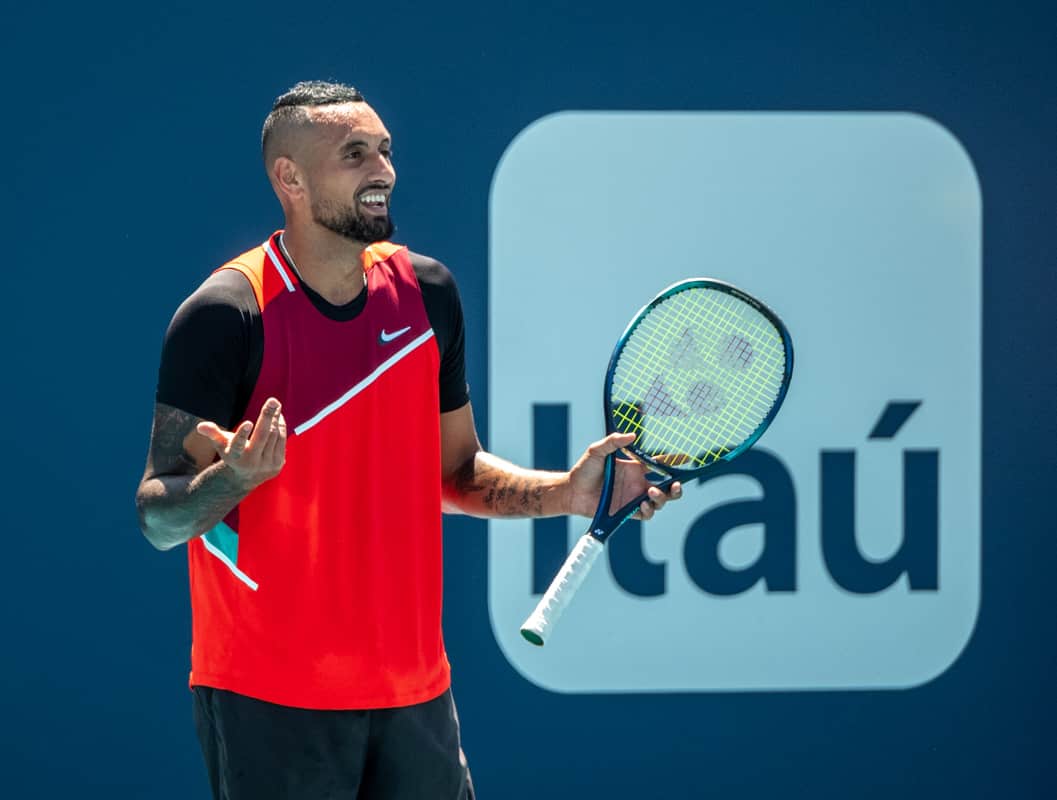Just as “Drive to Survive” helped Formula One to find a new audience, the Netflix docu-series “Break Point” has blown fresh air into the world of tennis by getting up close and personal with the players.
The timing of the new Netflix series was apt — in 2022, tennis lost two of its all-time greats when Roger Federer and Serena Williams retired.
Neither Rafael Nadal nor 35-year-old Novak Djokovic can go on forever either, although the Serb has avoided the multiple injuries which seem to be hastening an end to the Spaniard’s title-laden career.
With them, their fans are ageing too.
So, to tie in with the Australian Open, the year’s first Grand Slam tournament, Netflix launched “Break Point” in mid-January.
Unlike “Drive to Survive”, which follows some of the biggest names in Formula One including world champion Max Verstappen and his Red Bull team, “Break Point” mainly focuses on younger, up-and-coming players.
The first episode though follows the rise in 2022 of Nick Kyrgios, the brash Australian who loves the camera. The tone is set in the opening episode when he yells: “Let’s film a Netflix series and shit. Let’s get it, baby!”
The aim is clear from the start — to rejuvenate the appetite of sponsors and broadcasters, and open up tennis to a new audience.
“We see the necessity of providing more content behind the scenes and offline… to actually provide a richer experience to the fans,” ATP president Andrea Gaudenzi explained in July.
“Drive to Survive”, which launched in 2019, has been a boon for Formula One. By showing the drivers up close in their daily lives or demonstrating their car-handling skills at terrifyingly high speeds, the production has been such a success that a fifth season is due for release in February.
The phenomenon has boosted TV audiences. In the United States, one of the priority markets since Liberty Media acquired the commercial rights to F1 in 2017, a record 1.2 million viewers watched each race last year, 28% more than in 2021, according to broadcaster ESPN.
Having become “glamorous”, F1 now attracts a “younger and more mixed” audience, said Thomas Senecal, sports director of Canal Plus, the sport’s official broadcaster in France.
Human beings
“Break Point” also focuses on the Tunisian Ons Jabeur, who at Wimbledon last year became the first Arab woman to reach a Grand Slam final.
She is shown after losing that final to the Kazakh Elena Rybakina, telling the camera: “I am not scared to let people see through me.
“I really have nothing to hide. Quite the opposite. I just want to show people that we are just human beings and we suffer a lot after a loss.”
Unfortunately, players at this year’s Australian Open have joked about the “Netflix curse” after injury prevented Kyrgios even starting the tournament, Jabeur crashed out in the second round, and two players who feature prominently in “Break Point”, Paula Badosa and Ajla Tomljanovic, also pulled out.
Key themes
Sports docu-series are set to increase in the months to come, with a series about golf called “Full Swing” due to hit the screens and one on rugby union in the pipes for 2024.
One of the biggest hits for Netflix has been “The Last Dance”, retracing the Michael Jordan era at the Chicago Bulls.
The number of sports-based series increased by 70% between 2019 and 2022, according to Glance, which specialises in observing international audiovisual markets.
“Sport is now one of the key themes of documentary series,” said Glance researcher Zelie Auvinet.
Following the model of “Break Point”, Netflix is screening “Cheer”, a behind-the-scenes look at a cheerleading team in Texas, while Amazon has made “MotoGP Unlimited”.
The ravishing countryside and thrilling finishes of the Tour de France are the subject of a series later this year, made by France Televisions.
Anne Georget, president of Fipadoc, the international documentary festival taking place in the French resort of Biarritz this month, said: “Beyond the great spectacle, sport offers exceptional drama, destinies and struggles against adversity and injury. The public is also fond of it.”







